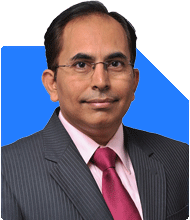Ramalingam Kalirajan |10924 Answers |Ask -Follow
Mutual Funds, Financial Planning Expert - Answered on Apr 22, 2024
He has an MBA in finance from the University of Madras and is a certified financial planner.
He is the director and chief financial planner at Holistic Investment, a Chennai-based firm that offers financial planning and wealth management advice.... more

Hi, Which is better investment, multi asset allocation fund or balanced advantage fund in 3-5 years time frame?
Multi Asset Allocation Fund: These funds invest across multiple asset classes like equities, debt, and gold. They aim to provide diversification and reduce portfolio volatility. They're suitable for investors looking for moderate risk and diversification.
Balanced Advantage Fund: These dynamically allocate between equity and debt based on market valuations. They aim to capture equity market upside while providing downside protection. They're suitable for investors with a slightly higher risk tolerance but seeking some level of downside protection.
For a 3-5 year timeframe, Balanced Advantage Funds might be more appropriate as they adjust equity exposure based on market conditions, potentially offering better downside protection. However, it's crucial to align your choice with your risk tolerance and investment goals. Consulting a financial advisor can provide personalized advice.
You may like to see similar questions and answers below
Ramalingam Kalirajan |10924 Answers |Ask -Follow
Mutual Funds, Financial Planning Expert - Answered on May 07, 2024
Milind Vadjikar | Answer |Ask -Follow
Insurance, Stocks, MF, PF Expert - Answered on Oct 23, 2024
Janak Patel |72 Answers |Ask -Follow
MF, PF Expert - Answered on Feb 11, 2025
Ramalingam Kalirajan |10924 Answers |Ask -Follow
Mutual Funds, Financial Planning Expert - Answered on Jul 13, 2025
Ramalingam Kalirajan |10924 Answers |Ask -Follow
Mutual Funds, Financial Planning Expert - Answered on Sep 08, 2025
Radheshyam Zanwar |6754 Answers |Ask -Follow
MHT-CET, IIT-JEE, NEET-UG Expert - Answered on Dec 23, 2025
Purshotam Lal |70 Answers |Ask -Follow
Financial Planner, MF and Insurance Expert - Answered on Dec 23, 2025
Purshotam Lal |70 Answers |Ask -Follow
Financial Planner, MF and Insurance Expert - Answered on Dec 23, 2025
Samraat Jadhav |2522 Answers |Ask -Follow
Stock Market Expert - Answered on Dec 23, 2025
Samraat Jadhav |2522 Answers |Ask -Follow
Stock Market Expert - Answered on Dec 23, 2025
Samraat Jadhav |2522 Answers |Ask -Follow
Stock Market Expert - Answered on Dec 23, 2025
Samraat Jadhav |2522 Answers |Ask -Follow
Stock Market Expert - Answered on Dec 23, 2025
Samraat Jadhav |2522 Answers |Ask -Follow
Stock Market Expert - Answered on Dec 23, 2025
Dr Nagarajan J S K |2578 Answers |Ask -Follow
NEET, Medical, Pharmacy Careers - Answered on Dec 23, 2025
Samraat Jadhav |2522 Answers |Ask -Follow
Stock Market Expert - Answered on Dec 23, 2025


























